Perhaps, if the Tower of London could speak, it would tell the most extraordinary tale of British history. Conquest, horror and exotic beasts; the Tower of London has seen it all.
The Tower of London stands 90 feet high, its walls 15 feet thick in places. It was founded in 1078 by William the Conqueror.
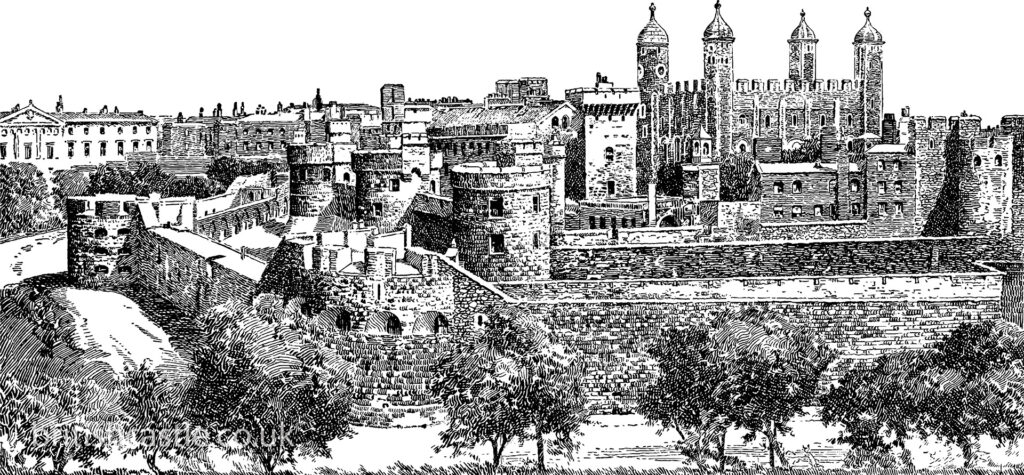
First created as a symbol of defeat and oppression, the Tower of London has since been used for several other reasons, all fascinating to the avid history lover. And although it was first created as a tool to instil fear today it inspires awe and wonder in millions of tourists every year, and is a source of pride for Londoners.
Since the construction of the first tower there have been numerous additions including the curtain wall by Richard the Lion heart in the 12th century and from Henry III palatial buildings constructed within the inner bailey. Edward I completed a second outer wall between 1275 and 1285. A royal residence until the 1600’s the Tower of London also has a darker history.
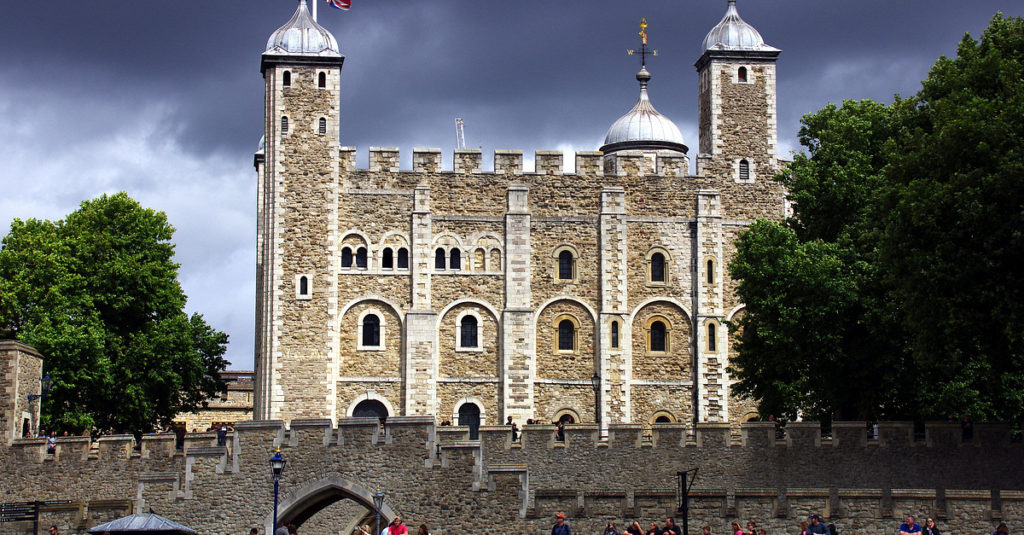
Throughout its time the structure has served many purposes. It has been the location of a court observatory, it has served as a prison and been the place of death to a number of people. Some formal executions have been held there also.
The government has used it. It has been the location of royal entertaining including menageries that consisted of a variety of exotic animals. There are also the flightless ravens that are house and cared for there to this day. The Tower of London also serves as the keep for the Crown Jewels.
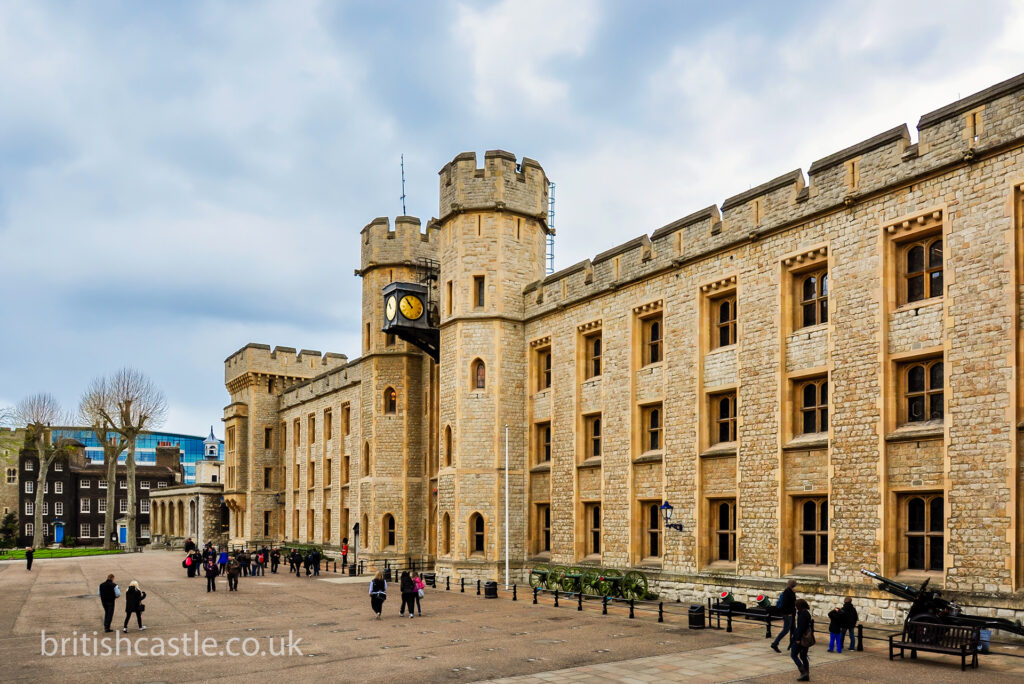
Let’s learn more about this extraordinary tower’s rich history, and explore some reasons why it should be the next destination on your tour list.
White Tower and the Complexities of the Tower of London
For those who have never seen the Tower of London proudly positioned on the north bank of the River Thames, you may be imagining a single magnificent building reaching for the clouds and surrounded by massive walls. However, the Tower of London loosely refers to the additional buildings erected by successive conquerors. Because of this, the Tower of London is a castle and is officially known as the His Majesty’s Royal Palace and Fortress of the Tower of London. Quite the mouthful, but it gives a clearer idea of what to expect.
So, what exactly is the story of the original tower that planted the seed of this now sprawling complex?
The Tower of London’s Origin Story: A Conqueror’s Quest for Legitimacy
Who built the Tower of London, and why?
The Tower’s beginnings can be traced back to the Norman invasion of England. The term “Norman” is sometimes used to describe all of the descendants of the Vikings who arrived in northwest France in the tenth and eleventh centuries. The Viking commander Rollo and King Charles III of West Francia signed a pact in 911 that gave rise to the duchy of Normandy, which is now known by that name. The duchy is a region that a duke administers.
The Norman invasion of England in 1066 was motivated by the desire for a Norman king to succeed the Anglo-Saxon monarch. They thought Harold, who lacked royal lineage, should not be king and that William the Conqueror, who was also the Duke of Normandy, should. Following the Witenagemot’s rush to appoint Harold as King, who was at the time Earl of Wessex, rivals also detected the Anglo-Saxons’ anxiety. The day after Edward’s death, on January 6, 1066, Harold was crowned in Westminster Abbey to solidify his position due to fears over competing claims from William Duke of Normandy and the King of Norway.
Unfortunately for Harold, his reign would be short-lived. On 14 October 1066, William, Duke of Normandy, met King Harold at the Battle of Hastings. Harold was murdered and the battle was won by the Duke’s Norman warriors, and William was crowned king on Christmas Day.
William was a foreigner in a place he did not fully control. He needed a stronghold to keep London’s rebellious citizens in line. It also needed to be something that would make them both fear and respect him. He needed to build something that would be the ultimate symbol of royal power: he chose a castle.
The location that William picked for his castle is the same location where Claudius, the Roman Emperor, had a fortress built more than a thousand years earlier, and remnants of the sturdy, ancient Roman walls can still be seen today within the Tower complex.
The Tower was first just a plain structure made of wood and stone. A ditch and barrier were added to the north and west sides of the old building to finish it. A stone building was constructed within this boundary. The Great Tower is how this stone structure came to be known. It took over 20 years to construct the Tower with the help of craftsmen from William’s homeland who brought stone from Caen in France, and English labour.
The Great Tower would then become the heart and soul of the Tower of London, forming the epicentre of renovations that radiated through an area of 20 square kilometres over nearly 1000 years.
What are the Different Renovations that Have Created the Tower of London?
The Tower of London has had different ownership in its near millennium-long history. Although each ruler may have added something to the impressive structure, 4 rulers made significant changes to the structure.
King Henry III settled in the Tower of London in about the year 1240. He erected a great hall, and other structures, and extended the grounds to incorporate a church in addition to whitewashing the Great Tower. Due to its exterior being bleached, the tower was given the name “La Tour Blanche” (White Tower) by the Normans.
The Tower of London evolved into an all-purpose complex, with the White Tower serving as the cornerstone of a residential palace and fortification fit for a monarch or queen.
Apart from the whitewashing of the Great Tower to create the White Tower, other key developments were spearheaded mainly by King John, Henry III’s father, Kind Edward I, King Henry III’s son and King Richard I.
The site was expanded to 12 acres under the reigns of Henry III and Edward I, and it was surrounded by a moat fed by River Thames, and high brick walls that were punctuated by turrets, gates, and towers. It developed into one of Europe’s most impenetrable strongholds. Traitors’ Entrance, so named because it was used by captives coming to jail after being tried in Westminster Hall upriver, became the most well-known or infamous gate that led into the Tower from the River Thames.
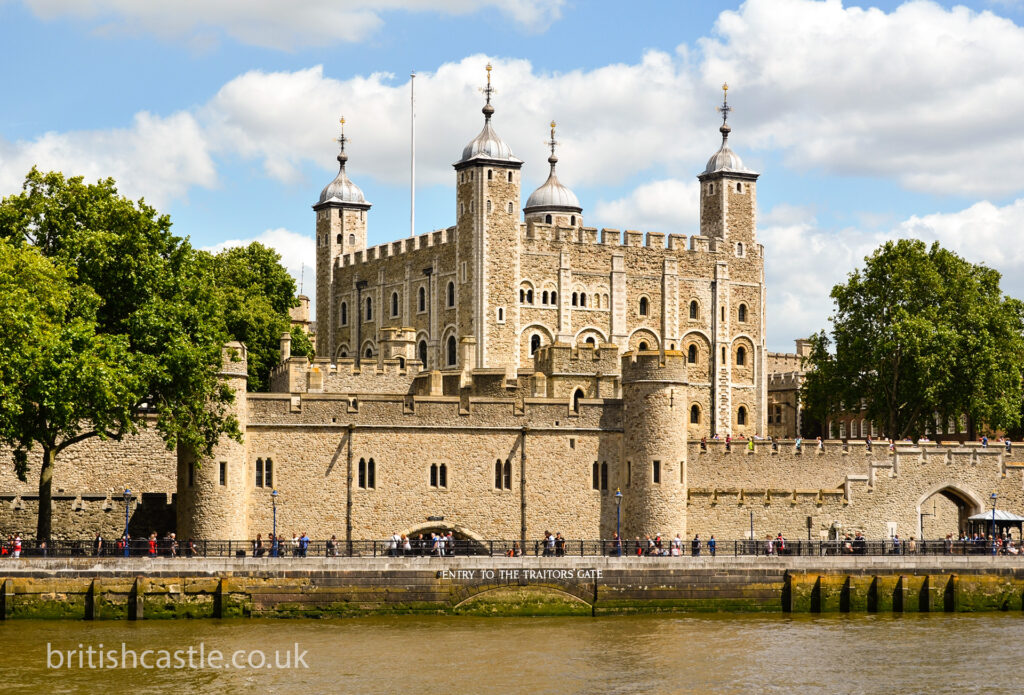
There was also a palace, a royal gem house, a royal wardrobe, a tower mint, a state prison, and gardens within the walls.
The four turrets on the White Tower’s top were initially conical, but in the sixteenth century, the conical crowns were changed to the current onion-shaped ones. In addition to using the Tower as a jail, Henry III continued to host important guests there while using it as a palace. Many of these visitors brought the monarch presents of animals. These presents were housed close to Henry’s construction of Lion Tower, a royal zoo where guests would be greeted by the roaring, wondrous beasts.
However, the housing of exotic animals is not something that was introduced to the palace buildings by Henry III. His father before him, King John had established a royal menagerie in 1204 during his reign.
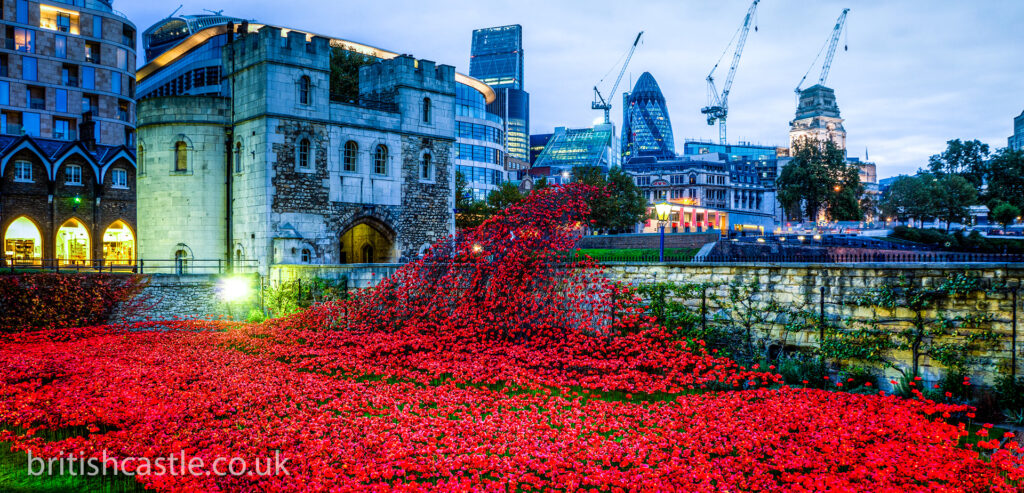
After losing the battle for Normandy that year, King John received the strange consolation gift of three crates full of wild animals. He chose the tower since he had no other suitable place to house them. And that was the beginning of the first royal zoo in central London.
The royal menagerie was fully formed by Henry III, who enthusiastically embraced this part of the tower’s function. The “pale bear,” which experts believe to be a polar bear, was the most unusual of all Henry III’s creatures. The mighty creature was shipped to London in 1252 as a gift from the King of Norway.
But that would only be one of the many. The Holy Roman Emperor gave three leopards to Henry in 1235, marking the commencement of the royal Menagerie. The elephant was given by Louis IX, King of France, and was buried on the grounds of the Tower after it passed away. And the famous polar bear from the King of Norway would be chained in such a way that it could catch fish from the Thames, entertaining the curious onlookers.
The Structures of The Tower of London
The Tower of London comprises more than 40 distinct buildings, each with something special for visitors to enjoy. We have already spoken about the White Tower which was initially called the Great Tower, but we will give another brief overview for you to understand it in the context of the other buildings. Here is an overview of what spectacular sights you can look forward to when you visit the Tower of London:
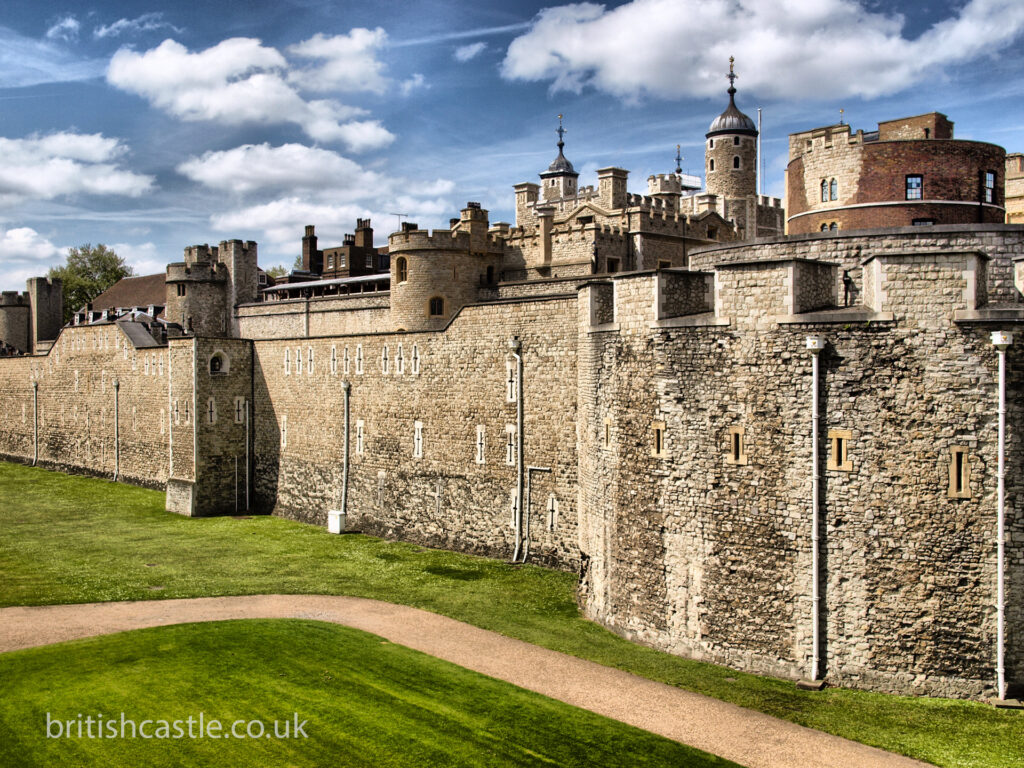
White Tower
The White Tower is the heart and soul of the mighty fortress that is the Tower of London complex. It was the first structure erected and was at first made of wood. Building techniques that involved stone had not yet been fully adopted by the Normans and the Anglo-Saxons. The White Tower is one of the best-known tourist attractions of the Tower of London.
St John’s Chapel
The Chapel of St. John the Evangelist, also known as St. John’s Chapel, is a chapel from the 11th century, that is situated in the Tower of London. St. John’s was constructed in 1080 and serves as a chapel royal today. It is the oldest complete chapel from the early Norman period still standing.
Waterloo Barracks
The Waterloo barracks is a major structure in the Tower of London’s inner court. It is frequently also referred to as “Waterloo block.” The structure was constructed in 1845 with the intention of housing 826 soldiers. It has always been and still is the mighty fortress’s biggest structure. It was constructed concurrently with the officers’ quarters, which is now the headquarters for the fusiliers.
These days, it primarily serves as an administrative office. On an international level, it is known to hold the treasure chamber, which is the place where the British Crown jewels have been kept since 1967.
Bell Tower
The Tower, which is now part of the Tower of London, has housed many renowned captives over the years, including Thomas More and Princess Elizabeth, to name a few. At 5.45 p.m. these days, if you’re close to the Tower, you’ll hear the bell ring alerting tourists that the Tower is about to close for the day.
Queen’s House
The royal chapel is in front of the queen’s home. It was constructed in a significantly different architectural style from the Tower of London in the early 1530s, during the reign of King Henry VIII.
The Queen’s House is one of the few structures of this type to have survived the Great Fire of London in 1666; it was spared due to its location inside the tower’s stone walls.
The Resident Governor of the Tower of London currently resides there. Here was once the home of the Tower Lieutenant, who looked after several well-known prisoners, including Lady Jane Gray and Rudolf Hess, the final prisoner to be housed in the tower in 1941.
Beauchamp Tower
This tower is named after Thomas Beauchamp, Earl of Warwick, who served as its first prisoner. He was imprisoned by Richard II in 1397. The Beauchamp Tower has housed prominent individuals in prison for much of the tower’s history. Because of its size and proximity to the Lieutenant’s residences, today known as the Queen’s House, the Beauchamp Tower was ideal for housing prominent captives.
The Beauchamp Tower is the most well-known of the towers for its graffiti, which was engraved there around the 16th and 17th centuries. That time was a period of political and religious turmoil in which the Tower of London became the country’s largest, and most notorious, state jail.
Wakefield Tower
The Wakefield Tower, which was once known as Blundeville Tower, was constructed beginning in 1220 as part of the initial round of Tower of London renovations.
Simply put, the Wakefield Tower housed the royal quarters. It was the opposite of the Lanthorn Tower, which housed the Queen’s royal residences. Following the two Legge and Brass mounts, two defensive towers located north of the second enclosure, it is one of the largest towers in the Tower of London.
A wall holding a portcullis connected the Wakefield Tower to the traitors’ gate. The Wakefield and Lanthorn towers were connected by a sizeable hall in the past, which was located in the southern section of the white tower. They were also surrounded by several other buildings but they are all currently demolished.
King Edward I decided to reside in the Tower of St. Thomas, which he had constructed. The kings decided to move to Lanthorn after his death rather than Wakefield. To this day, Wakefield is not inhabited by the kings.
Tower Hill
The areas of the Tower Liberty that are beyond the Tower of London and its moat are generally referred to as Tower Hill. Great Tower Hill to the west is within the London Wall line, whilst Little Tower Hill to the east is beyond the wall.
From the late 14th to the middle of the 18th century, high-status prisoners were publicly executed at Tower Hill. Trinity Square Gardens has taken over the location of the execution site, which was on higher land to the northwest of the Tower of London moat.
Tower Hill’s notoriety for being the top execution site for high-profile royals was only rivalled by tower green. Tower Green is a section of the Tower of London, where two English Queen consorts and several other British nobility were beheaded. Three English queens were executed on Tower Green: Anne Boleyn, Henry VIII’s second wife; Catherine Howard, Henry’s fifth wife; and Lady Jane Grey. Most of Henry VIII’s wives lost their lives there. Not be confused with Henry III who only had one wife.
Traitor’s Gate
The Traitor’s gate is the second entry to the Tower of London complex. In the olden days, it was also the most dreaded gate because several inmates convicted of various crimes would pass through it on their way to their death. It is located beneath the St. Thomas Gate, which was constructed to add more royal quarters.
The Tower of London gradually turned into a detention facility for treason-accused enemies of the state throughout the centuries. The Traitors Gate would be the entrance that these felons would be guided through. This function earned it the nickname “Traitors Gate” due to the high volume of criminals passing through. The inmates were transported by barge along the Thames as they passed beneath the London Bridge, where the horrifying heads of the newly killed prisoners were on display on pikes.
Lion Tower
The Lion’s Tower was London’s very first zoo. From the 1200s to around 1835, it housed several exotic animals that the people of London had never seen or heard of before. From the famous pale bear from Norway to the massive elephants from Egypt, the Lion’s Tower became one of the most fascinating sites in London.
The number of animals kept in the menagerie is not known. However, skeletons of lions that were 600 years old were uncovered. Knowing that the zoo thrived for several years, the number is probably in the hundreds.
Sadly, Lion’s Tower is now in ruins. The only remnants that have survived are a few statues of the mighty beasts that once called it their home.
Bloody Tower
The Bloody Tower is located on the southern rampart and faces the Thames. It is next to the Wakefield Tower, which was the King’s old residence. It is a large, rectangular structure that is about 6 metres by 8 metres wide.
The ground floor has a broad passage that may be blocked by a large harrow that has a lifting mechanism on the first floor. But the most fascinating thing is that this medieval mechanical system is still operational and visible today.
The Constable’s garden was the inspiration for the original name of the Bloody Tower, which was Garden Tower. Later, a parade area was built over this garden. The several high-profile murders that took place there are presumably how it gained its name. However, it is unclear which of the infamous killings served as the inspiration for the name’s terrifying connotations. It may be the suicide of the 8th Earl of Northumberland, Henry Percy. Or even Henry VI’s death in the tower during the War of the Two Roses. However, it is most likely because of the killings of the two princes, Richard, Duke of York, and Edward V.
The Mysterious Deaths of The Two Princes
Edward V and his younger brother Richard Duke of York were only 13 and 10 years old at the time of their death. Records show that they were last seen in the Summer of 1483.
The Princes were the children of Elizabeth Woodville and the reigning monarch, Edward IV. Having been born amid the violent Wars of the Roses, their father’s passing made them easy targets. After Edward IV died in 1483 his brother Richard III, the Duke of Gloucester, became Lord Protector of Edward’s son and heir. Edward V was only 12 years old at the time.
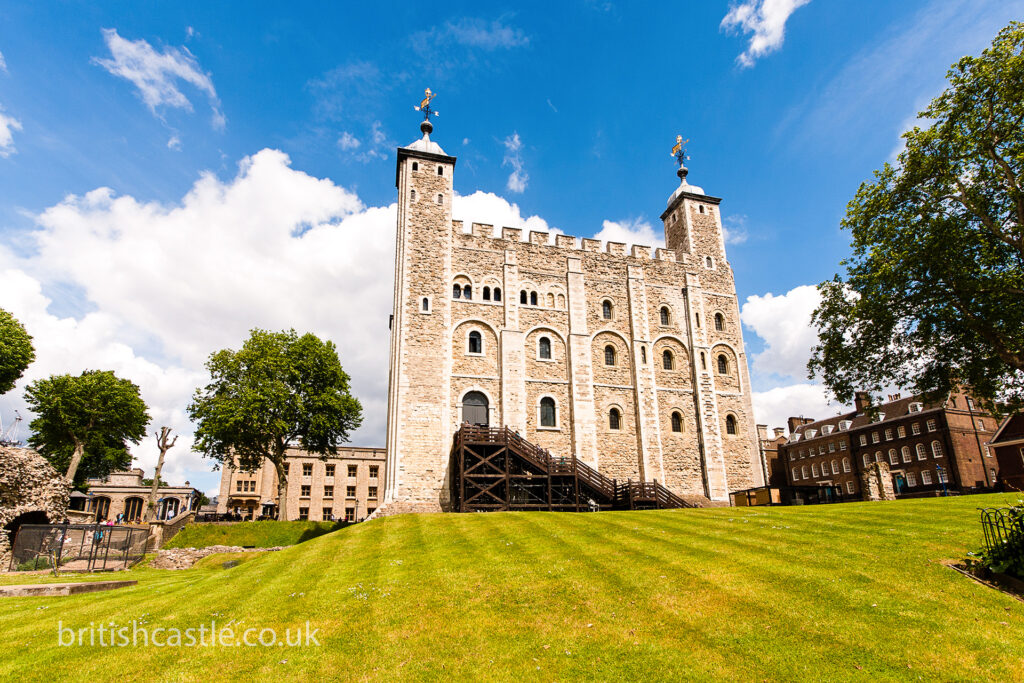
However, the two princes were considered to be illegitimate due to a marriage agreement Edward IV had with Lady Eleanor Butler before his marriage to Elizabeth Woodville. Therefore, his children with Elizabeth were not the rightful heirs.
The two children were then escorted to the Bloody Tower from where they never returned alive. Sir James Tyrell reportedly confessed to smothering the two children in 1502. But by that time, the confession was of no consequence.
What Was Life Like In the Tower of London?
The walls may have appeared intimidating from the outside, but inside was a bustling, energetic neighbourhood. In addition to traders and residents hawking their goods, there were court attendants and slaves. There was a bakery, a forge, a brewery, a dairy, and their respective employees. Gardeners would have grown flowers, vegetables, and herbs in the Tower’s gardens while keeping cattle, chickens, and pigs outside the kitchen.
Did the Kings Use the Tower of London as a Residence?
Yes, quite a number did. But their experiences were not quite different.
Although Henry III had designed a comfortable and opulent home, its primary function was as a fortification, and he only visited it 11 times throughout his long rule. These were times of crisis when he barricaded himself inside to protect himself, like when Simon de Montfort’s followers were following him.
While other Plantagenet monarchs were less fortunate, Henry at least had the option to stay at the Tower for his safety. Following the overthrow of his father Edward II, Edward III’s mother Isabella and her lover Roger Mortimer kept him there as a young boy in a virtual jail.
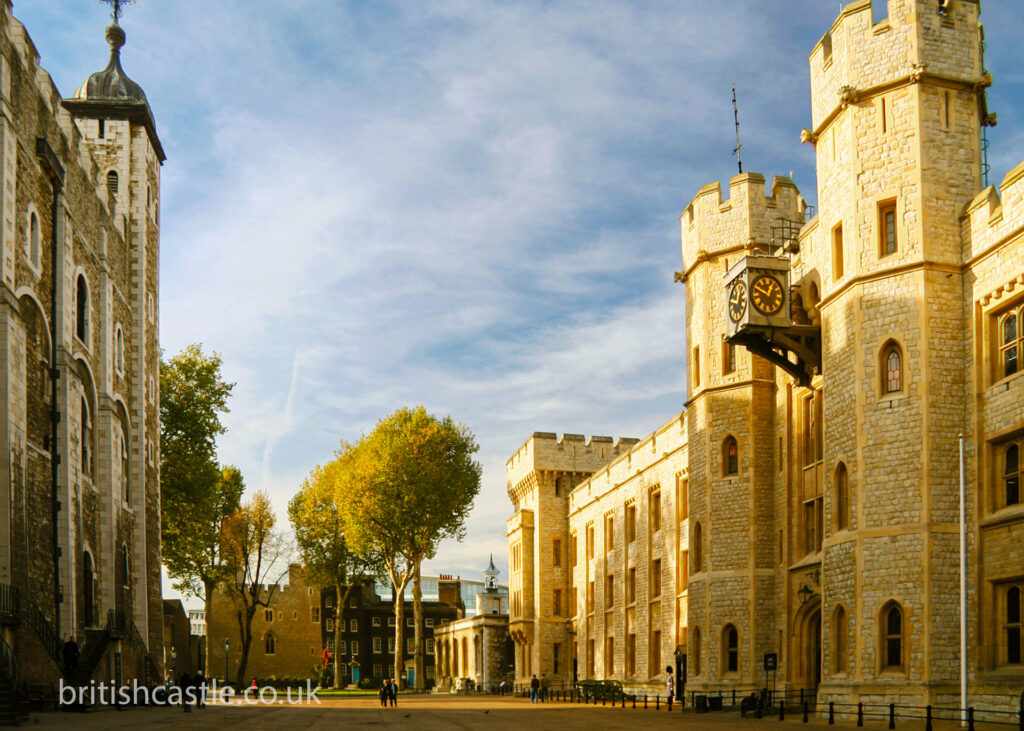
Henry IV’s grandson Henry VI, the last Lancastrian monarch, died there while being imprisoned by Edward IV. Richard II was imprisoned there after his relative Henry IV stole the throne. The Tower of London did not become the hub of a bustling Royal Court until the reign of the Yorkist Edward IV.
Today, the Royal Family resides in Buckingham Palace.
The history of the Tower of London began as a result of oppression. Throughout the years, it also became a place where several people were imprisoned and lost their lives. However, it was also the place that Kings would use to evade their enemies, and as we will later see, a place that was strategic in the victory of important wars. Therefore, the complex is now a symbol of national pride.
The new meaning and purpose attached to the Tower of London are not only because it has served as a governing central for centuries, thus ensuring the longevity of the English people but also because of the rich history and story, it tells.
Today, the Tower of London is a UNESCO World Heritage Site site, attracting close to 3 million people annually. All these people come to see the formidable structures and learn the fascinating history. But they also come to see the beautiful jewels that are stored in the complex.
Crown Jewels
The tradition of keeping the Crown Jewels in the Tower of London began during the reign of Henry III. The monarch could pawn the treasure to raise funds when necessary. As a result, the treasure provided the monarch with independence from the aristocracy and served as a source of royal power. As a result, the treasure was closely guarded, and those in charge of the jewels’ security were handsomely rewarded.
Taking care of the Crown Jewels was so important that a new position was created for “keeper of the jewels, royal armouries, and other things.” Over time, the position expanded to include other responsibilities such as purchasing royal jewels, gold, and silver, as well as appointing royal goldsmiths and jewellers.
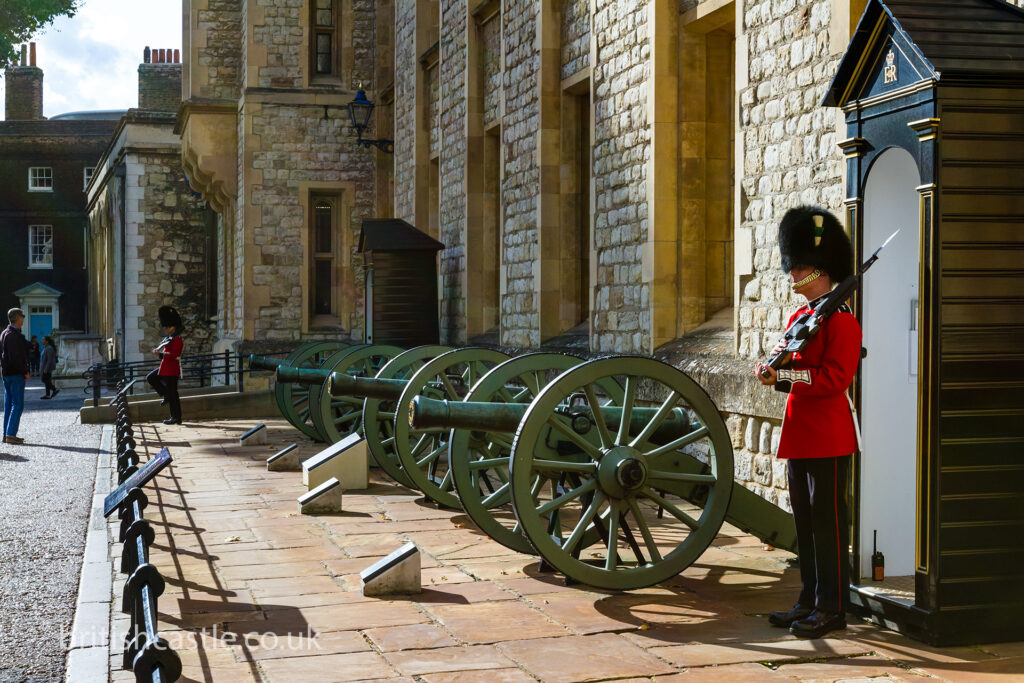
The Crown Jewels have been on display in the Waterloo Block’s Jewel House since 1994. Queen Elizabeth II once frequently used some of the items. The 800-year-old Coronation Spoon, the Imperial State Crown, and St. Edward’s Crown are all on exhibit, along with 23,578 jewels. St Edward’s Crown is the one traditionally placed on a monarch’s head at the crowning ceremony. The Jewel House was destroyed in 1669, and the Crown Jewels were relocated to Martin Tower, where they remained on display for the paying public until 1841.
The Crown Jewels are now on display at the Jewel House at the Tower of London, where they are protected by armed guards. These treasures are a one-of-a-kind working collection of royal regalia that the monarch continues to frequently use for significant national rituals like the State Opening of Parliament.
Historic Royal Palaces
The Historic Royal Palaces is an organisation that manages and maintains the unoccupied palaces and castles of London, the Tower of London included. It is an independent charity and a part of the Department for Digital, Culture, Media and Sport.
The other royal palaces managed by the Historic Royal Palaces:
- the Tower of London,
- Hampton Court Palace,
- the Banqueting House,
- Kensington Palace,
- Kew Palace,
- Hillsborough Castle.
Without the Historic Royal Palaces, the people of London would be missing a significant part of their heritage and history. And thanks to their efforts, people from all over the world can see these majestic, ancient structures as well.
Fascinating Facts You Probably Didn’t Know About the Tower of London
We have discussed the most intriguing bits of history about the Tower of London and know a lot about the different structures you should expect to see on a visit to the complex. Here are some additional facts that will be sure to leave you thousand times more excited about your trip to the fascinating Tower of London!:
The Resident Ravens
Six tower ravens have lived behind the walls of the Tower of London since the 1600s. According to King Charles II, if the six resident ravens ever depart the castle, the realm and the Tower of London will also fall. Charles II was the first to insist on protecting the tower ravens after being informed that if they fled, the crown and the Tower would collapse. John Flamsteed, the king’s astronomer, objected to the King’s decree, saying the ravens were impeding the operation of his observatory in the White Tower.
Today, the Tower is home to seven ravens. The required six, and an extra raven just in case of anything, ensuring that there will always be six ravens within the Tower’s walls. The seven ravens are Jubilee, Erin, Harris, Gripp, Merlina, Poppy, and Rocky. They live near the Wakefield Tower.
The Daily Ceremony of Keys
Every evening at the Tower of London, before the main gates are shut for the night, a historic ceremony known as The Ceremony of the Keys is performed. And the tradition has been conducted every evening over the past 700 years, no matter what was going on at the time. It is said to be the world’s oldest surviving military ceremony and the Tower’s most well-known ceremonial practice.
That means the event was conducted during both World Wars, the disastrous fire of London in 1666, and even while the Plague was inflicting havoc on Londoners. The Yeoman Warders have taken their responsibilities seriously and will do so for many years to come.
The Yeoman Warders Live in the Tower of London
For many years, the Yeoman Warders have guarded the Crown Jewels and the Tower of London. They are very carefully selected based on numerous criteria. For instance, you must have served in the army for 22 years before you can become a Beefeater. You must also be willing to uproot your family to live in the Tower. But perhaps this is a small price to pay for the prestige and honour that comes with being a Yeoman Warder.
The golden thread used to embellish their uniforms alone makes each one cost more than £7,000.
But where does the word beefeater come from? The first “Beefeaters” were Henry VII’s guards. They got their name from being allowed to eat as much steak as they desired from the King’s table. The king presumably used this to show his appreciation, or to control the guards by keeping them happy and full. We may never be too sure about what the real intentions were.
Henry VIII would later order that some of them stay and guard the Tower permanently.
The Tower of London Played an Important Role in the World Wars
When it comes to the gory Tower of London facts, the stronghold’s involvement in both World Wars, when it was transformed into an impregnable military base, was possibly the most significant.
During World War I, the Tower moat served as the Royal Fusiliers Regiment’s training area. It’s important to note that the Royal Fusiliers Regiment’s headquarters are still in the Tower today and that the Tower of London still functions as a garrison. The Royal Fusiliers Regiment, whose headquarters are still at the Tower, served as a training field during World War I. Within days following Britain’s decision to enter WWI, young men who worked near the Tower in the City enlisted. Some people organised volunteer brigades with friends or co-workers.
The Tower of London Has a Secret Pub
Yes; the Tower of London has its very own pub! The pub is most popularly known as the Yeoman Warders Club and is other times cleverly referred to as the Keys. It is a private establishment that is only accessible to Yeomen Warders and their guests. The Keys has been in this location for 150 years, even though there has likely been some type of pub within the Tower walls for longer.
The Last Person Executed in the Tower of London was a German Spy
The Tower of London has for long been a centre of the nation’s defence. So, it comes as no surprise that German spies during the second world war would find their way there. Josef Jakobs was a German spy and the last person to be executed within the walls of the Tower of London.
Majesty’s Royal Palace: Why the Tower of London Should Be Your Next Destination
“Her Majesty’s Royal Palace and Fortress of the Tower of London”, or simply the Tower of London is a complex entity, both in structure and history. Enjoy the view of majestic structures built with brick and stone imbued with the beauty and mystery of a thousand years. But most importantly, come and experience an accurate physical representation of London’s enduring and persistent spirit.
Today, the Tower of London has become one of the most visited historic sites in the UK. Today, Historic Royal Palaces, a charity organisation looks after the tower. For detailed information on opening times and visiting charges, please visit to the official website of Historic Royal Palaces.